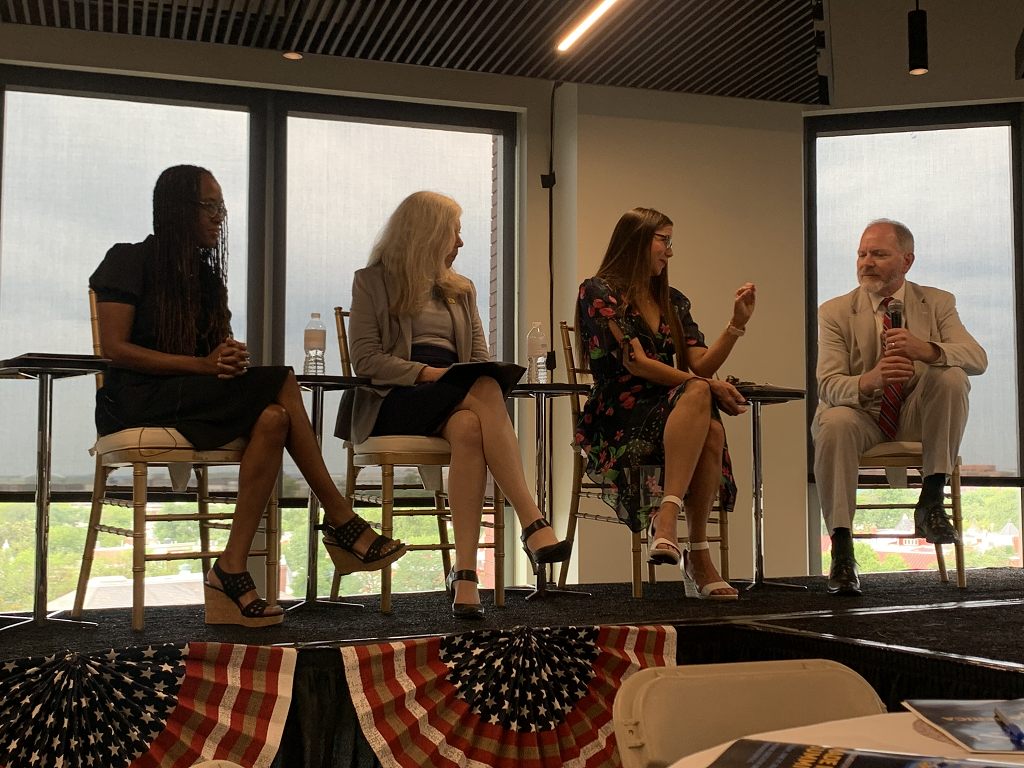Permitting, Purchase Restrictions Still Outstanding as BEAD Makes Way to States
Permitting delays could make the five-year deployment timeline difficult to meet, panelists said.

WASHINGTON, June 27, 2023 – One day after the White House announced the allocation of broadband infrastructure money to the states, state broadband officials said there remain permitting and purchase restriction obstacles in the path of completing builds within the mandated five-year timeline.
The officials from Virginia, Kansas and New Mexico reflected on the amounts they received from the government’s $42.5-billion Broadband Equity, Access and Deployment program and on the challenges ahead to deploy the money at Broadband Breakfast’s Made In America Summit Tuesday.
The challenge of getting a timely response and the actual permits from utility and federal land agencies managed by the Department of the Interior to deploy the actual infrastructure was raised as a primary obstacle to get resolved.
“We can’t get anyone to respond,” said Kelly Schlegel, the New Mexico director of the Office of Broadband Access and Expansion, referring to the BLM.
“So not only is it getting the whole process of the rights-of-way, it’s getting somebody to respond and start the process.”
Tamarah Holmes, director of Virginia’s Office of Broadband, backed that up with an example of a broadband project funded in 2019 to connect 22 houses that crossed federal land overseen by the National Park Service. Those homes have yet to get broadband access because Holmes said she can’t get a response from the agency.
“Just think about it: Design and engineering is done. We got the houses identified. We can’t get the permit…at the same time the costs are significantly going up on the ability to get to those 22 [houses]. So maybe in five years I’ll get to them, but now the cost might be twice as much as it was in 2019.”
Indeed, since the start of the pandemic, supply chain issues have meant not only delays in getting equipment, but a shortage of said equipment. In combination with higher inflation, the cost of broadband equipment has increased.
Jade Piros de Carvalho, Kansas’s director of the Office of Broadband Development, noted that a land agency official remarked that the permitting process would take at least 18 months.
“You’re telling us some of this is going to take 18 months to get one of these [permits] done?” Piros de Carvalho said. “I think the federal government needs to staff those agencies.”
Schlegel also noted that internet service providers who want to attach to existing wood poles – a primary way to attach broadband equipment – must still pay for the replacement of poles if an upgrade is needed to accommodate them. Because the third-party providers must also continue to rent space on the pole, the project because very expensive.
This has forced some ISPs in New Mexico to just dig underground – the traditionally more expensive way of rolling out infrastructure – because it turns out to be cheaper, a reality that Piros de Carvalho called “shocking.”
The Federal Communications Commission is currently deliberating on whether to force pole owners to share in the cost of pole replacements, with the prevailing idea being that the owners derive long-term revenue benefit from the new pole.
Holmes said the complaints and friction between the pole owners and broadband provides has been a “huge issue and it will continue to be a huge issue.” But she noted that there are some ISPs who are buying poles for the utility companies and have a cost-sharing agreement already in place to work around some of these access issues.
Piros de Carvalho also noted that the Build America, Buy America requirements under the Infrastructure, Investment and Jobs Act – which requires that most of the cost of a project be made in America – could end up being a sticking point because some key products required for builds are simply not in enough supply in the country.
“We’ve got labor constraints, we’ve got supply chain constraints, we’ve got rights-of-ways and permitting, but definitely yes, we’re talking with the NTIA…after we get a year or so into this, we’re going to have to get real about what it takes.”
Piros de Carvalho said when it comes time for final proposals on broadband deployment plans using BEAD money, the conversation on what to do about the Buy America requirements will begin to really ramp up.
Despite the preference of the National Telecommunications and Information Administration for hard fiber for its ability to scale to the highest available speeds, Piros de Carvalho said her state must grapple with the reality that its $475-million allocation was not enough to connect the geographically large state with many high-cost rural areas with hard infrastructure.
“We’re just going to have to use a mix of technologies that we maybe wouldn’t have considered had we gotten a billion dollars,” she said.
New Mexico received $675 million, though Schlegel said she expected money in the $700 million territory based on analyst estimates.
Virginia received a comparatively hefty $1.48 billion.
To watch the full videos from the Made in America Summit, sign up for the Broadband Breakfast Club!








